A week in the Polytunnel
This week: Lightning, lightning – Very, very frightening; Just a little more rain; A week in the Polytunnel; Preparing for winter;

We have had a lot of much needed rain this week.
Of course we are now in the month of September, so I have added all the data from my weather station to my spreadsheet.
August 2023 has been the wettest August since I moved to Dol from Abu Dhabi with 156mm of rain during the month.
This total is almost 9 times the average for the month of August.
This is absolutely in line with the models for how climate breakdown is affecting different regions of the work.
The changes to the climate bring more intense weather, be that heat, storms, precipitation or drought.

The combination of heat and moisture has been of benefit to my trees, plants and flowers.
The Pink Agapanthus, Tulbaghia violacea, are in flower a month early.

Elsewhere my Buddleja shrubs which had stopped flowering during the heat of summer, have burst back into flower again and are covered with butterflies.
The rain this week has also meant that I have not had to irrigate either. That is one job less to do on my list!
Lightning, lightning: Very, very frightening
All day on Monday I kept an eye on the weather radar and the lightning website Blitzortung, watching to see if and when we would receive some rain.
The storm finally arrived at 17:25.
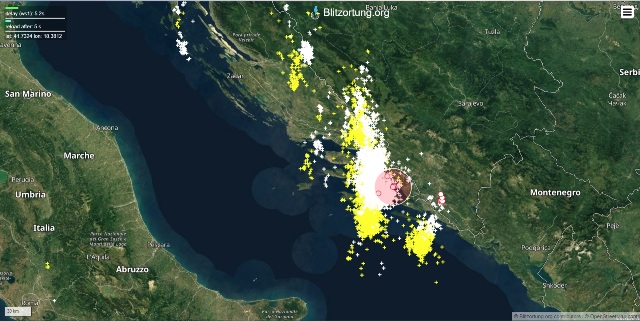
Each white dot is the electrical discharge from lightning. Yellow dots are more than 10 minutes old.
There was torrential rain, which at the height of the storm was falling at a rate of 128mm per hour.
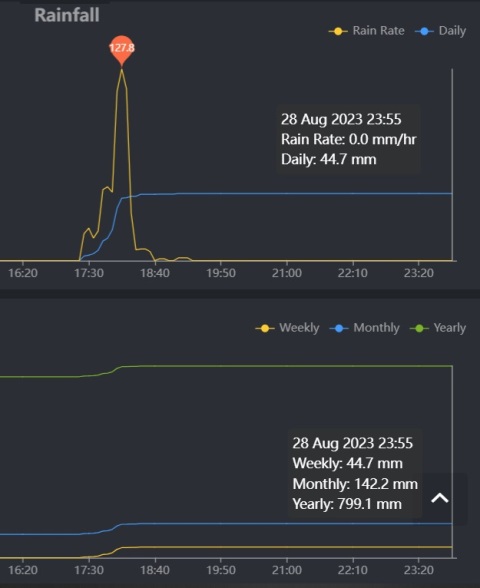
I had battened all hatches and closed all the windows and doors because I could see what was coming.
The dark clouds made the street lights come on and I needed lights on inside. The electrical distribution system on the island is all above ground and is usually affected by lightning, so I had turned everything off and unplugged all my devices.
This storm though was mainly of the kind where the lightning discharged are within clouds and between clouds. There were few cloud to ground strikes.
One of my weather station sensors is a lightning detector and it registered 455 discharges within 50 km of the sensor.
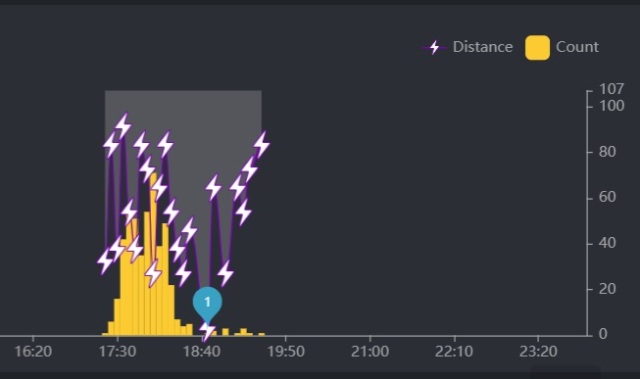
The storm was moving quickly and had cleared Dol in just over one hour. In its wake it left a very useful 45mm of rain. That is 45 litres of rain per square metre so I have not needed to irrigate since.
I did try to photograph the lightning display, but through the windows, none of my photographs were good enough to publish.
Just a little more rain
Monday has not been the only wet day. We had a little more rain on Tuesday, Wednesday and Thursday.
I watched the websites again on Thursday and saw a storm coming in from the west.
Dol was bathed in warm sunshine, as the storm moved across Brač.
I spent some 45 minutes sitting in the sunshine on the hillside above my home watching the storm move across the island. There was not even a single drop of rain where I was.
Because of the warmth of the Adriatic sea, the speed and intensity of the storm and the high humidity, I was not surprised to see a cloud start to rapidly rotate and descend below the general cloudbase.
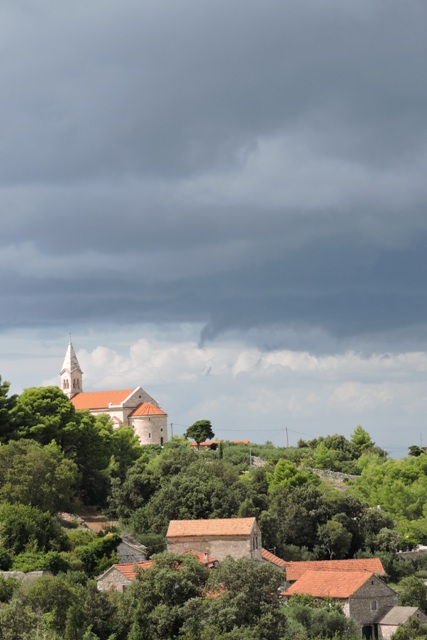
The conditions were ideal for a waterspout to form.
The cloud continued to rotate and move down towards the sea under the storm.
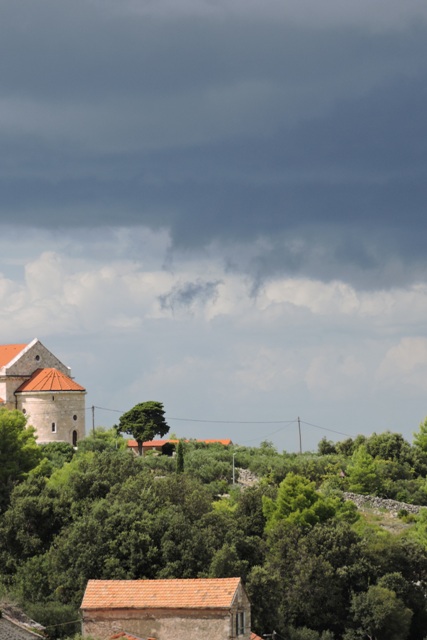
We have had several waterspouts reports around the island this summer and I was hoping to catch one on camera.
Waterspouts do not form in the same way as tornado do. They are exclusively over water and the moment they touch land, the column of water collapses. They do not magically become a tornado over land.
As I watched the cloud continued to descend, thicken and rotate more quickly.

What you cannot see, because it is behind the hill in the foreground, is the Kabal peninsula which separates the Brač channel from the Stari Grad inlet.
As the cloud continued to rotate and descend, in the photograph above, it was approaching land and at that point the rotation broke down and the cloud evaporated.
One of these days I will catch a waterspout when I have my camera to hand…
A week in the Polytunnel
Apart from picking tomatoes and other vegetables, I have spent little time in the polytunnel this summer.
The result is that things have grown, especially the weeds.
It has been hot in there, too hot to work comfortably. By hot I mean over 43ºC on the hottest of days.
Even early in the morning the temperature has induced significant perspiration.
The temperature is one reason I have been looking at varieties of tomato which will enjoy such heat.
This week as the temperature has dropped 10 degrees with the rain, it has been pleasant working in the polytunnel, removing weeds, cutting dead leaves from the bananas and thinking about what to do next.
I have a problem with a deep rooted convolvulus. This is a nasty pernicious vine like week, which will climb and smother anything and everything.
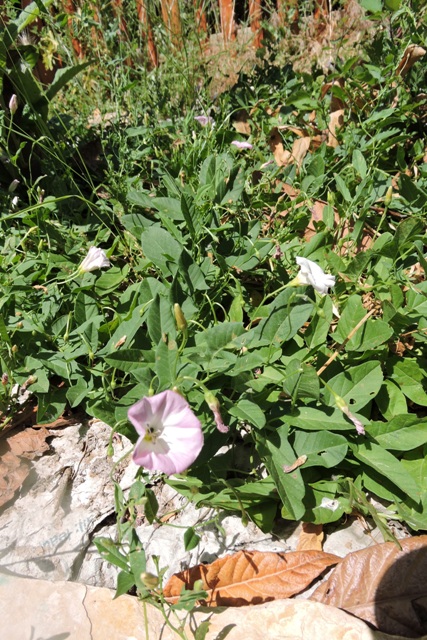
I do not use any weed killers, and when digging out the roots, even the tiniest piece of string like root which is left, will produce another plant.
So I have been thinking about what to do.
The answer is to build some raised beds, with a plastic membrane under them to stop this weed by denying it light and water.
At the end of the week, the polytunnel is almost weed free and I have a plan for how I would like it to develop.
Preparing for winter
I seem to always be thinking one or two seasons ahead of where we actually are here in Dol. This week it has been about repairing roofing.
I discovered in the spring that because of the shape of the polytunnel roof, it acts as a wing and flexes up and down as air moves across its surface.
The stronger the wind, the faster the air moves over the surface and the more it flexes upwards.
This means that in one place, on one panel where I forgot to screw one edge down, it has lifted out of the support frame.
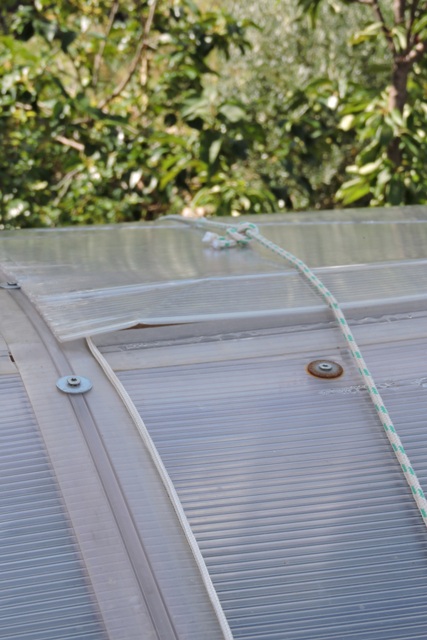
As a temporary measure, I also put plastic cord across the panels, connected to the turnbuckles I installed. Some of this cordage has broken down in the summer sun and if frayed and broken.
So one job this week has been to measure for completely new cords, on all the panels.
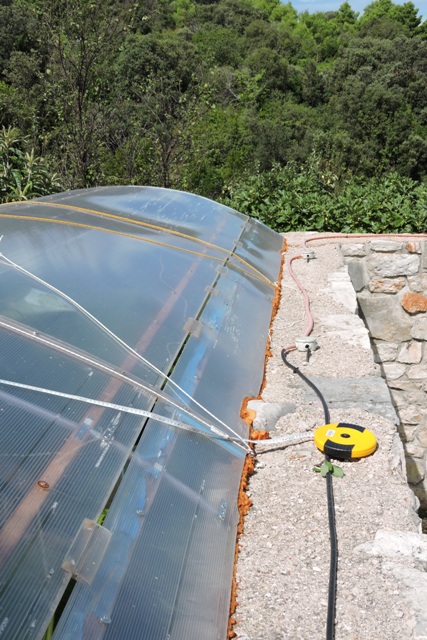
I can get the material from Volat, where they have every possible diameter for yachtsmen. Being designed for sailing and the extremes of salt water and wind, it should be OK for my thermoplastic roof!
My sure footed assistants have not helped as they like to use the roof as an extension of their domain.
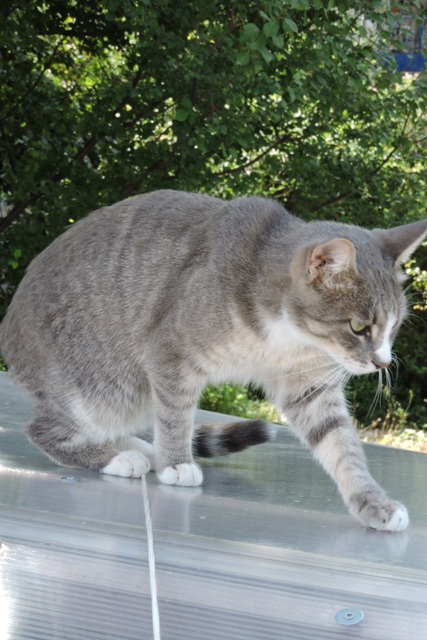
I mentioned a couple of weeks ago that the roof which joins my buildings was also leaking, because the temporary timbers have bowed.
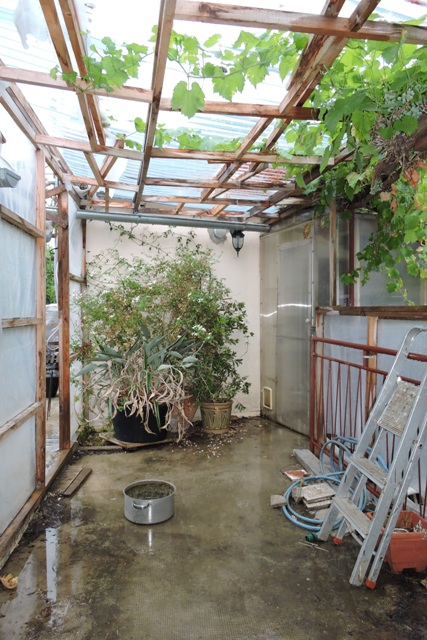
I made this four years ago from the cheapest wood I could buy, in anticipation of the building work to join the buildings taking place. It still hasn’t happened.
From on top, the polycarbonate sheets have become concave.
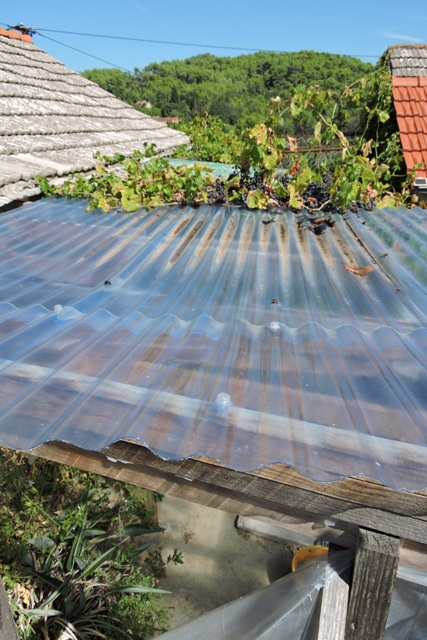
I need to remove the polycarbonate and used some more substantial timber to support the sheeting and once again make a waterproof passageway between my buildings.
On Saturday morning I was down at Volat, the local builders merchant, to buy in supplies for my next series of projects.
On my way down to town, I had taken all my cardboard, glass and plastic to drop off at the recycling centre.
My car came back laden as usual, with timber on the roof rack and lots of materials inside.
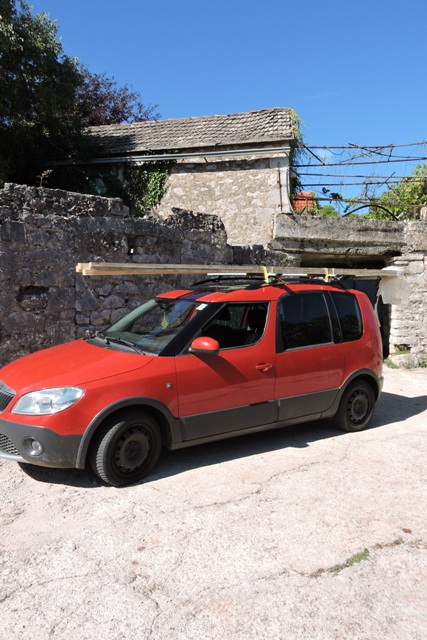
I am reminded of the 6P rule:
Perfect Planning Prevents Particularly Poor Performance…….. NCG